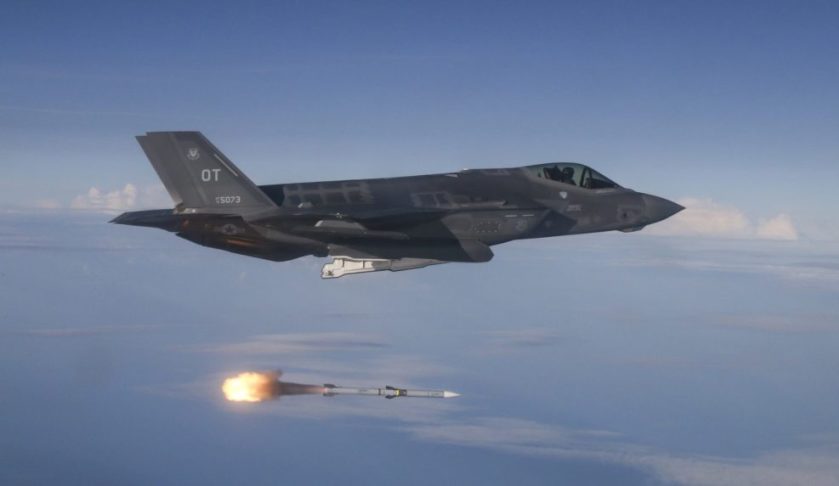The US Air Force has highlighted the growing capability of the F-35 Joint Strike Fighter and its ability to engage in and dominate the battlespace following the successful engagement of two airborne targets simultaneously.
To continue reading the rest of this article, please log in.
Create free account to get unlimited news articles and more!
The Pentagon's now completed multi-year System Development and Demonstration (SDD) was the test phase for the F-35 Joint Strike Fighter variants. The completion of the SDD paved the way for accelerated full-rate production of the aircraft, lasted more than a decade and included more than 46 weapons tests, Lieutenant Colonel Tucker Hamilton, F-35 test director at Edwards Air Force Base, said.
The test involved an F-35 pilot firing two Advanced Medium-Range Air-to-Air Missiles (AMRAAM) at manoeuvring drones in the air, bringing synchronised attack to a new level for the aircraft using an integrated targeting sensor called the Electro-Optical Targeting System (EOTS).
Lt Col Hamilton said, "Two AMRAAMs had multiple targets – to shoot two airborne targets simultaneously. It was a complex set-up that happened over the Pacific. They were shooting at drones."
The F-35 is engineered with an ability to dogfight and engage in air-to-air combat, yet it was also designed with an array of next-generation sensors designed to see, detect and destroy enemy targets from much further ranges than existing fighter jets can.
This versatility is best defined by its two distinct, equally potent load-outs, designed for highly-specialised missions ranging from penetrating enemy air defences and gaining air superiority to deep, precision strike against well defended, integrated enemy air defence networks.
- Stealth mode: Leverages the low-observability profile and characteristics of the aircraft to enhance its lethality by ensuring that the plane can't be seen by enemy air, land or sea-based radars, reducing the probability of enemy intercept, allowing the F-35 to prosecute its strike with unrivalled competence. In stealth mode, the aircraft can be armed with a range of weapons, loaded within the internal weapons bays to maintain the stealth profile, these include up to 5,700 pounds of internal ordnance.
- Beast mode: For when discretion has gone out the window and air superiority has been guaranteed, the F-35 takes on an entirely different role and character. Beast mode provides the platform with unrivalled strike capability for an aircraft of its size, enabling the F-35 to carry up to 22,000 pounds of internal and external ordnance.
"We needed to see if it could fly high and fast pulling 9Gs. We also conducted mission system testing of all the sensors which allow us to execute a mission. This included countermeasures, data-links, radar and weapons delivery accuracy to ensure that the F-35 can find, fix and track targets," Lt Col Hamilton said.
Over the coming years, Australia will purchase 72 of the advanced fifth-generation fighter aircraft as part of the $17 billion AIR 6000 Phase 2A/B program – which is aimed at replacing the ageing F/A-18A/B Classic Hornets that have been in service with the RAAF since 1985.

 Login
Login






